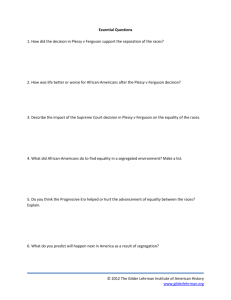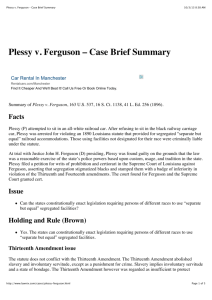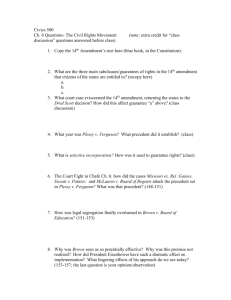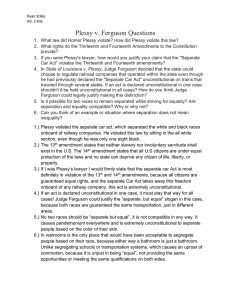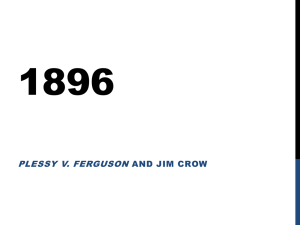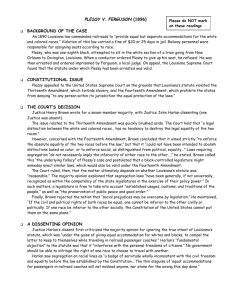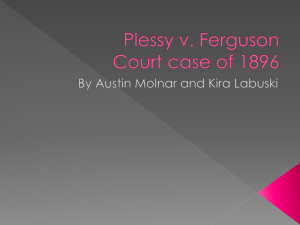Plessy v. Ferguson SC Decision Summary
advertisement
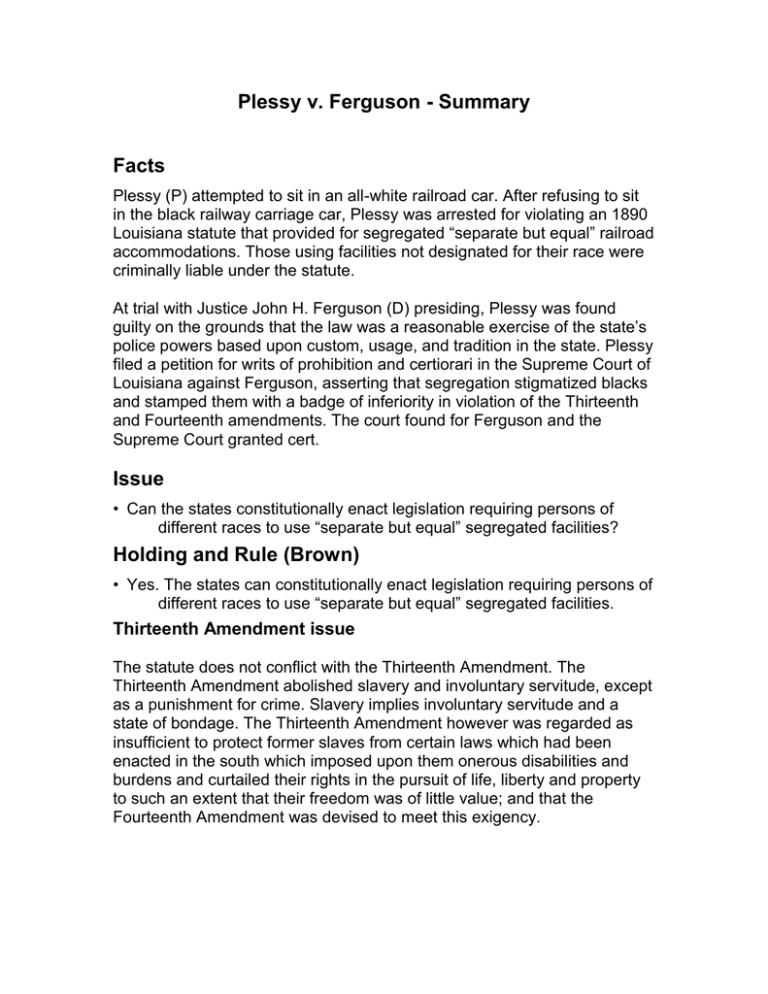
Plessy v. Ferguson - Summary Facts Plessy (P) attempted to sit in an all-white railroad car. After refusing to sit in the black railway carriage car, Plessy was arrested for violating an 1890 Louisiana statute that provided for segregated “separate but equal” railroad accommodations. Those using facilities not designated for their race were criminally liable under the statute. At trial with Justice John H. Ferguson (D) presiding, Plessy was found guilty on the grounds that the law was a reasonable exercise of the state’s police powers based upon custom, usage, and tradition in the state. Plessy filed a petition for writs of prohibition and certiorari in the Supreme Court of Louisiana against Ferguson, asserting that segregation stigmatized blacks and stamped them with a badge of inferiority in violation of the Thirteenth and Fourteenth amendments. The court found for Ferguson and the Supreme Court granted cert. Issue • Can the states constitutionally enact legislation requiring persons of different races to use “separate but equal” segregated facilities? Holding and Rule (Brown) • Yes. The states can constitutionally enact legislation requiring persons of different races to use “separate but equal” segregated facilities. Thirteenth Amendment issue The statute does not conflict with the Thirteenth Amendment. The Thirteenth Amendment abolished slavery and involuntary servitude, except as a punishment for crime. Slavery implies involuntary servitude and a state of bondage. The Thirteenth Amendment however was regarded as insufficient to protect former slaves from certain laws which had been enacted in the south which imposed upon them onerous disabilities and burdens and curtailed their rights in the pursuit of life, liberty and property to such an extent that their freedom was of little value; and that the Fourteenth Amendment was devised to meet this exigency. Fourteenth Amendment Issue All persons born or naturalized in the United States and subject to the jurisdiction thereof are made citizens of the United States and of the State wherein they reside, and the States are forbidden from making or enforcing any law which shall abridge the privileges or immunities of citizens of the United States, or shall deprive any person of life, liberty, or property without due process of law, or deny to any person within their jurisdiction the equal protection of the laws. The proper construction of this amendment involves a question of exclusive privileges rather than race. Its main purpose was to establish the citizenship of former slaves, to give definitions of citizenship of the United States and of the States, and to protect the privileges and immunities of citizens of the United States from hostile legislation of the states. It was intended to enforce the absolute equality of the two races before the law, but it was intended to abolish distinctions based upon color, or to enforce social equality, or a commingling of the two races upon terms unsatisfactory to either. Laws permitting and even requiring their separation in places where they are liable to be brought into contact do not necessarily imply the inferiority of either race. Such laws have generally been recognized as within the scope of the states’ police powers. The most common instance involves the establishment of separate schools, which has been held to be a valid exercise of the legislative power even by courts of States where the political rights of blacks have been longest and most earnestly enforced. Disposition Judgment for Ferguson (Plessy loses). Note This case was later overruled by Brown v. Board of Education. Justice Warren wrote the opinion for a unanimous court, holding that separate facilities which segregate based on race are inherently unequal.
